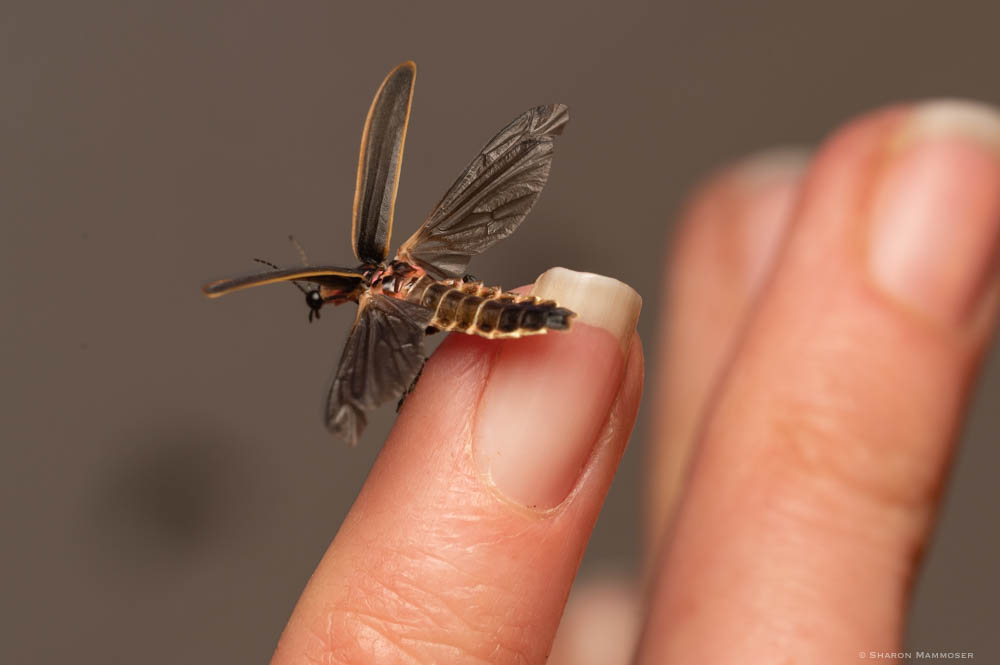Keeping the firefly magic alive
Published 1:08 pm Wednesday, June 21, 2023
|
Getting your Trinity Audio player ready...
|
3 ways to help local lightnin’ bugs
Are you among the lucky ones who actually see fireflies in your own yard? Are you still awed by the firefly magic, eager to eavesdrop on their conversation of flashes? It might amaze you to learn that there are 2,000 species of fireflies in the world with more than 125 different kinds living in the United States, each with its own unique flashing pattern, though there are some “dark” fireflies that don’t have lanterns as adults.
When many of us were kids, fireflies marked the end of long summer days spent outside in the sunshine. Many of us have fond memories of running around through wet grass in the darkness, laughing as we tried to catch the twinkling beetles, joyful when we could hold the insect in our small hands, watching it in silent wonder as it flickered on and off. We were captivated!
These days neighborhoods are more plentiful, and wild, grassy meadows are hard to find or not somewhere parents feel comfortable letting their kids roam. There’s more pavement, brighter outdoor lights, less wild places within walking distance from our houses. Seeing fireflies on warm summer nights is not as common. Now we may have to get in the car and drive somewhere if we want to experience the firefly magic.
Did you know there are simple things you can do to make your yard more firefly friendly? Here are a few things everyone can do, most of which cost absolutely nothing:
- Create an Inviting Habitat
If your yard is mostly grass, stop mowing a portion of it, or mow it less frequently. Did you know fireflies spend their days resting in grass or on vegetation, or that females often wait in the grass for wandering males?
Create native plant “islands” within your yard. When it’s impossible to eliminate all of your grass, choose to create islands within the grass where you can plant native grasses, flowers, shrubs and trees. Native plants add to insect and animal diversity, supporting many animals big and small.
Most importantly, leave the leaf litter. Did you know firefly larvae require leaf litter, or that they live in the leaf litter as larvae for one to three years before metamorphosing into adult fireflies? Firefly larvae are voracious predators, a gardener’s best friend as they feed on many garden pests including snails and slugs. Without undisturbed, moist leaf litter, fireflies won’t make it to adulthood. If it’s not possible where you live to leave the leaf litter on the ground where it falls, rake it up and spread it around your trees, or put it in your native plant islands. Don’t mulch your leaf litter, and don’t bag it up— there are many, many animals, including fireflies, that require leaf litter for part of their life cycles. Keep all of these amazing animals and nutrients in your own yard— It’s free fertilizer!
- Bring Back the Night
Did you know most fireflies need darkness to find each other? When patches of ground are lit up by artificial lighting, the fireflies can’t see each other and females may fail to mate and lay eggs. Rethink your existing outdoor lighting. Do you really need to leave those lights on all the time? Can you install motion sensors instead? Did you know you can replace your existing bulb with an adaptor and a new bulb that allows it to become a motion sensor? Is it possible to just turn off the lights when you’re not using them?
Be smart when installing new lighting. Use dark-sky-compliant, shielded lighting fixtures that direct the light downward. Choose the lowest-wattage bulb possible.
Take action to join the dark sky movement and just commit to leaving the lights off at night.
- Reduce Pesticide Use
Did you know fireflies, like many other insects, can be negatively affected by pesticides, insecticides, and other chemicals we commonly use in our yards?
- Avoid using broad-spectrum insecticides like malathion and diazinon.
- Pull weeds by hand
- Use mulch and cardboard to kill weeds in large areas
- Use a homemade weed killer: Mix one cup of salt, 1 Tablespoon of dish soap, and 1 gallon of vinegar. Apply to weeds with a spray bottle, wearing gloves to protect your hands
- Get informed about the health and environmental impacts of pesticides. Many, many animals, including fireflies, are negatively affected by these chemicals we are using on our lawns, and in our gardens.
Getting to see a meadow or someone’s front yard dancing with the twinkling lights of fireflies is a magical experience, and definitely one we don’t want to lose. Let’s all do our part to make our yards more welcoming for fireflies.
Sharon Mammoser is a naturalist and photographer with the website natureformysoul.com. She writes monthly columns as part of Conserving Carolina’s Habitat at Home campaign.
Submitted by Sharon Mammoser






